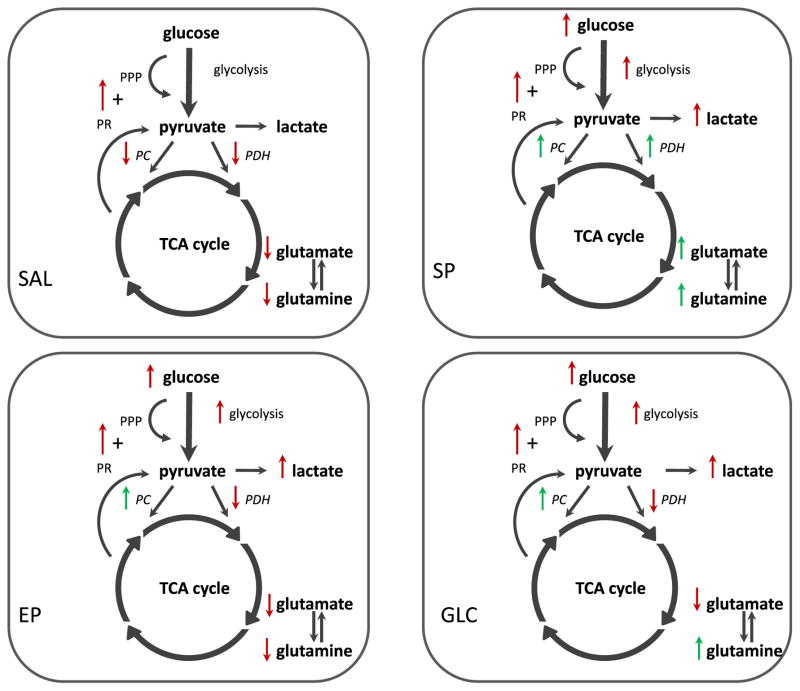Fig. 4.
The overall changes in metabolite labeling in the first turn of the TCA cycle and the relative incorporation of 13C label via different metabolic pathways in the injured cortex + hippocampus of CCI-injured animals following SAL or fuel treatment compared to Sham injury non-treated controls. In the SAL treated CCI-injured animals oxidative metabolism via both PC and PDH was reduced resulting in reduced 13C labeling of glutamate and glutamine (red arrows). In addition, the relative contribution of the PPP + PR pathway to lactate labeling was increased (red arrow) although this did not significantly increase the 13C lactate pool compared to Sham-controls. Following SP treatment, CCI-injured animals had increased lactate labeling via glycolysis and the PPP + PR pathway (red arrows). Glutamate and glutamine labeling via PDH and PC was similar to Sham-controls (green arrows) indicating improved neuronal and astrocyte metabolism compared to SAL. Similar to the SP group, EP treatment results in an increase in lactate labeling via glycolysis and the PPP + PR pathway (red arrows). However, oxidative metabolism via PDH was reduced (red arrows). In contrast, glutamate and glutamine labeling via PC was similar to Sham-controls (green arrow) suggesting improved astrocyte metabolism. With GLC treatment, 13C label incorporation into lactate via the various metabolic pathways (red arrows) was similar to the pyruvate treatments. Oxidative metabolism via PDH resulted in reduced labeling of glutamate (red arrows), however labeling of glutamine via PC was restored with GLC treatment (green arrows). Compared to SAL, the restoration of astrocyte-specific PC metabolism by SP, EP, and GLC treatment may underlie their abilities to improve cerebral glucose utilization and reduce neuronal loss following CCI injury. CCI, controlled cortical impact; EP, ethyl pyruvate; GLC, glucose; Lac, lactate; PC, pyruvate carboxylase; PDH, pyruvate dehydrogenase; PPP, pentose phosphate pathway; PR, pyruvate recycling; SAL, saline; SP, sodium pyruvate; TCA, tricarboxylic acid cycle.

